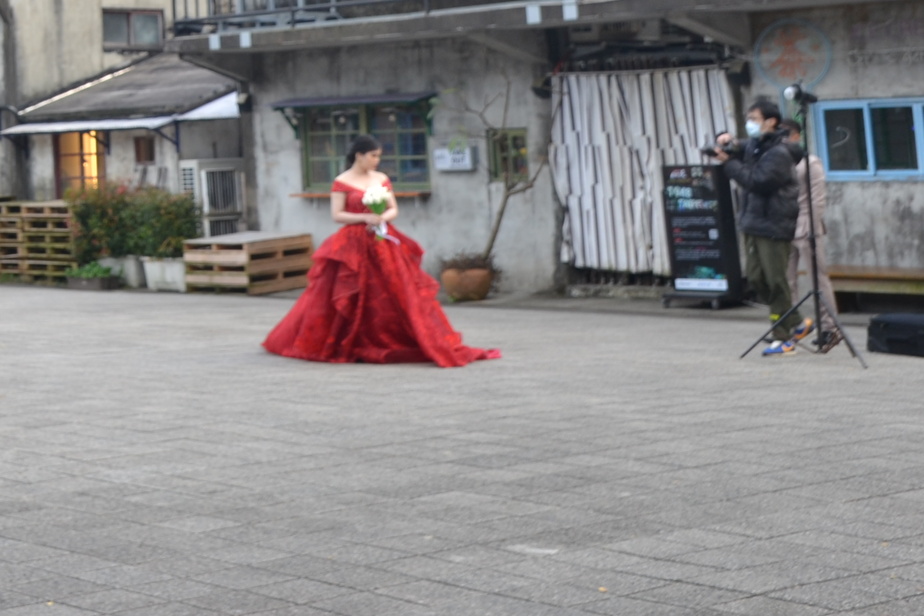They are absent from tourist guides. Most foreign tourists don’t even know they exist. These silent witnesses of Taiwanese history are worth the detour.
Former military villages were once inhabited by soldiers from the Nationalist army who took refuge on the island after the Chinese Civil War in 1949. Nowadays, few of them have resisted gentrification , but those who remain welcome visitors with open arms. A must to better understand the Taiwan of today.
The moment of a photo, it feels like stepping back 50 years. Dressed in her elegant qipao (Chinese women’s clothing), Zhang Jin-Tsun willingly poses in front of what was once her house, located in the former military village of Sanchong, on the outskirts of Taipei, the capital. She spent most of her life there, after marrying the son of a military officer. Now 67, she is now a tour guide there. Nostalgic, she points to the trees that have grown tall and leafy. “These we planted ourselves. »
Built in 1954, this military village intended for the Air Force was home to 59 families, or about 700 inhabitants. Ms. Zhang shows us around the ten or so houses open to visitors, all of which have been rebuilt. Some recreate the atmosphere of the time thanks to the donations of personal objects from former inhabitants: military trophies, uniforms, family portraits.
But for the guide, her most precious memories are in the community kitchen of the village, now entirely reconstructed with objects from the past.
In 1949, at the end of the Chinese Civil War, the Communist forces of Mao Zedong defeated the Nationalist army of Chiang Kai-shek. Between 1948 and 1955, more than 1 million Kuomintang soldiers (and their families) took refuge on the island of Taiwan.
At first they were temporarily installed in schools, temples or warehouses. But faced with the growing number of refugees, a management system became essential and military villages began to take shape.
The buildings were first constructed of simple materials – bamboo fences, houses installed on wooden structures, walls of mud and straw – because the exodus was not supposed to last. The objective of the Kuomintang at the time was to reconquer mainland China as soon as possible.
Between 800 and 900 villages have been built on the island, but today only 44 remain, according to the Ministry of National Defence.
In the heart of Taipei’s business district, the contrast is striking. In the background, Tower 101, one of the tallest skyscrapers in the world and a symbol of Taiwan’s economic miracle, rises 500 meters high. In the foreground are the remains of a military village: one- and two-storey houses, dilapidated walls, roofs covered with asphalt felt and tiles.
The village, nicknamed Four Four South Village after the 44th Logistics Command, was established in the late 1940s. from other nearby countries. Posh cafes and artist studios have also settled there. Its preservation was hard won thanks to the determination of citizens and veterans in the early 2000s.
Because all the military villages almost disappeared when the government adopted a law in 1996 which provided for their demolition to replace them with skyscrapers. But the discontent quickly made itself felt.
The most famous case of this resistance remains the Rainbow Village* in Taichung, the third largest city, located 150 km south of Taipei. While the houses in the village were in a derelict state, all the inhabitants were relocated, except for an old man, Huang Yung-fu.
Faced with protest movements to save the remaining villages, the government revised the law in 2007. Then, in 2017, it pledged to preserve 13 villages, including Sanchong.
For Ms. Zhang, who used to live there, the memories are still vivid, even though it has been more than 15 years since the residents were relocated by the authorities. A little forced, she admits. “No one wanted to leave”, cowardly, moved, the one who now lives in a residential tower in the company of uprooted families from nine other villages.
The tourist guide now has the mission of preserving the collective memory of her village. “Some third-generation people don’t even know it exists,” she said. It is therefore my duty to share our history and what we have experienced there. »















